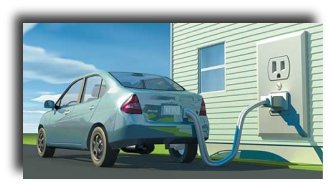 Two good news related to cars and their significant role in carbon emissions came out yesterday. The first was the proposal announced yesterday in Brussels by the European Union to force car makers to meet the goal of reducing carbon dioxide emissions to 120 grams per kilometer (192 grams per mile) by 2012. EU officials told car makers to make “deep cuts in tailpipe emissions of the cars they produce or face fines that could reach billions of euros during the next decade,” wrote the International Herald Tribune.
Two good news related to cars and their significant role in carbon emissions came out yesterday. The first was the proposal announced yesterday in Brussels by the European Union to force car makers to meet the goal of reducing carbon dioxide emissions to 120 grams per kilometer (192 grams per mile) by 2012. EU officials told car makers to make “deep cuts in tailpipe emissions of the cars they produce or face fines that could reach billions of euros during the next decade,” wrote the International Herald Tribune.
Unsurprisingly, the industry promised a fight citing difficulties in meeting the deadline and loss of competitiveness on a global scale. But the president of the European Commission, José Manuel Barroso, said tough laws were necessary to meet goals and to show the EU’s intention to be a leader in carbon emissions reduction.
The car industry had been given a decade for voluntary action but so far failed to make satisfactory adjustments so now they have no right to complain. They make billions of dollars selling their polluting machines and they have to pay for it. Even though it is good news that Europe is taking such measures now, it is rather shocking that governments have waited so long to get tougher on car makers. Haven’t we complained about the effect of car pollution on people’s health for decades now? Because of its financial power, the car industry has gotten away with too much damage on society and it’s high time to put a stop to that. Forcing them to cut down on carbon emissions to curb global warming will have the additional benefit of protecting our health as well and that is potentially great news.
Over in Japan, Honda yesterday announced its plans to “invest aggressively in research for hybrids and other new technology”, according to a CNN report. According to the company’s president, Takeo Fukui, Honda will introduce a new hybrid model running on gas and electricity in 2009, with sales of 200,000 vehicles a year. The company will focus on getting hybrid sales to account for 10 percent of its sales by about 2010.
Last month Honda unveiled the FCX Clarity fuel cell vehicle at the Los Angeles Auto Show, announcing plans to begin limited retail marketing of the vehicle in summer 2008. The FCX Clarity is a next-generation, zero-emissions, hydrogen-powered fuel cell vehicle based on the new Honda V Flow fuel cell platform, and powered by the Honda V Flow fuel cell stack. According to the a company’s press release, “the FCX Clarity marks the significant progress Honda continues to make in advancing the real-world performance and appeal of the hydrogen-powered fuel cell car.”






In your article “Fuel additives” you mentioned that some additives do reduce emissions, but you didn’t mention any names.
If the article title attracted folks who use or are thinking of using additives, I would think that it was a good idea to point them in the least harmful direction, instead of advise them to try to get Congress to do something.
It’s common knowledge that a majority of the folks in Congress work for whoever pays them the most money. Also they have NOT ended the war or stopped funding it, even thought that’s how the Dem’s got into power, they are distinctly underwhelming.
But you advise contacting Congress instead of telling us which are the least harmful if not actually helpful additives? Um. how can you possibly support that position?
You don’t have to be Leo DiCaprio to own one of the most fuel-efficient vehicles available, although it certainly helps if you want someone hot to ride shotgun. The stodgy auto industry, spurred by high gas prices and consumer demand, is coming around with more hybrid vehicles, smaller models and alternative energy options. Still, “fuel efficiency†stateside is an oxymoron akin to “congressional ethics†and “doing nothing.â€
The miles-per-gallon standard for cars in the United States is stuck at 27.5, compared to 43 in Europe and 46 in Japan. And those standards will be laughable in a few years time. Case in point: A British Volkswagen concept car gets 235 miles to the gallon. But that one won’t be available for a couple more years.
“Given everything that’s coming soon, if you can afford to wait, wait,†says Chelsea Sexton, electric vehicle advocate and executive director of Plug In America. (And while you’re waiting check out these 100 tips to save on fuel costs with your current vehicle.)
A plug-in hybrid charges for a few hours from a regular plug, runs solely on electricity for 40 miles or so and then kicks into gas-battery mode after that. Sexton says the full electric charge will cost about 50 cents a day. General Motors is readying both the Saturn Vue and Chevy Volt plug-in hybrids for consumers, while Daimler is working on plug-in Mercedes and Smart cars.
Or, for about $10,000, EPA-certified Hymotion will convert your gas-electric hybrid car into a plug-in. But if you’re looking to buy now, here are some of the most fuel-efficient passenger vehicles on the road in the United States
=====================
mike
=====================